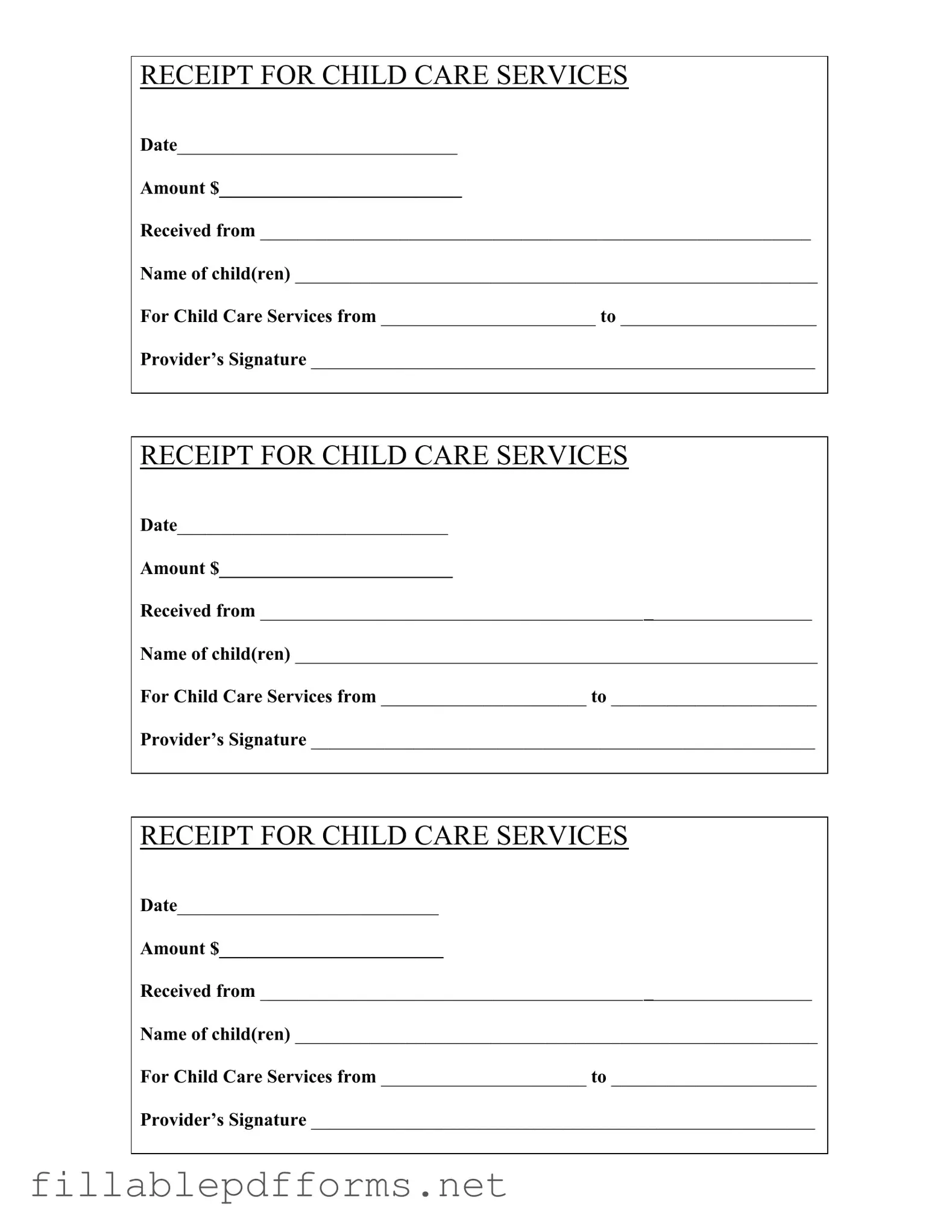The Childcare Receipt form is an essential document for parents and childcare providers alike, serving as proof of payment for services rendered. This form captures key details, including the date of the transaction, the total amount paid, and the name of the individual who made the payment. It also requires the names of the children receiving care, ensuring clarity and accountability. Additionally, the form specifies the period during which the childcare services were provided, offering a clear timeline for both parties. Finally, the provider's signature is a crucial element, as it confirms the receipt of payment and the legitimacy of the transaction. By using this form, parents can keep accurate records for their financial planning and tax purposes, while providers can maintain organized documentation of their services.
